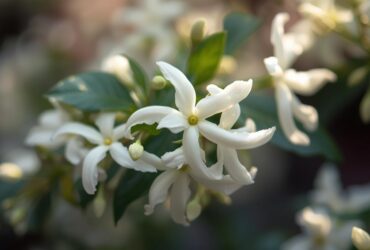The perfume industry is a multibillion-dollar market that attracts both genuine manufacturers and counterfeiters. As consumers, it is essential to distinguish between authentic perfumes and their counterfeit counterparts. Fake perfumes not only waste your money but can also contain harmful chemicals that pose health risks. This comprehensive guide will equip you with the knowledge to identify a genuine perfume from a fake, ensuring your investment in fragrance is worthwhile and safe.
Why Counterfeit Perfumes Are a Concern
Counterfeit perfumes have flooded the market, tempting consumers with lower prices and flashy packaging. However, these products often fail to replicate the quality and safety standards of genuine perfumes. Beyond financial loss, counterfeit perfumes can cause skin irritations, allergic reactions, and other health issues due to the use of low-quality and unregulated ingredients.
Key Indicators of a Genuine Perfume
1. Packaging Quality and Details
Authentic perfume packaging is designed with meticulous attention to detail. Here’s what to look for:
- Cellophane Wrapping: Genuine perfumes have tightly wrapped cellophane that is perfectly folded. Counterfeits often have loose or uneven wrapping.
- Box Material: Authentic perfume boxes are made from high-quality, sturdy cardboard. The printing on the box should be clear, smudge-free, and perfectly aligned.
- Barcodes and Batch Numbers: Check the barcode and batch number on the box and bottle. They should match exactly and be neatly printed.
- Spelling Errors: Counterfeit products often have misspelled brand names or product descriptions. Always inspect the text on the packaging carefully.
2. Bottle Design and Craftsmanship
The perfume bottle itself can reveal the authenticity of the product:
- Glass Quality: Genuine perfume bottles are made from smooth, high-quality glass with no bubbles or imperfections. Fake bottles may have uneven surfaces or poorly finished edges.
- Engravings and Labels: Authentic perfumes often have engraved logos or labels that are perfectly placed and easy to read. Counterfeits may use stickers that peel off easily or have blurry printing.
- Cap Fit: The cap of a genuine perfume bottle fits snugly and symmetrically. A loose or misaligned cap is a red flag.
3. Scent Longevity and Complexity
The fragrance itself is one of the most definitive ways to identify a genuine perfume:
- Top, Middle, and Base Notes: Authentic perfumes have a complex scent structure, evolving from top to middle to base notes over time. Counterfeits often smell one-dimensional and lack depth.
- Longevity: Genuine perfumes are crafted with high-quality ingredients that last for hours. Fake perfumes tend to fade quickly or develop an unpleasant odor.
- Alcohol Balance: Counterfeit perfumes often have an overpowering alcohol smell that is absent in authentic fragrances.
4. Price Discrepancies
If a deal seems too good to be true, it probably is. Genuine perfumes are priced according to the quality of their ingredients, packaging, and branding. A significantly discounted price may indicate a counterfeit product.
5. Retailer Reputation
Purchasing from authorized retailers is one of the easiest ways to ensure you are buying an authentic perfume. Be wary of street vendors, unauthorized online sellers, or marketplaces offering unusually low prices. Always check customer reviews and retailer certifications.
6. Serial Numbers and Authenticity Codes
Most high-end perfumes come with unique serial numbers and authenticity codes. These can often be verified on the manufacturer’s website. Counterfeit products may lack these codes or display invalid ones.
Steps to Verify a Perfume Before Purchase
- Inspect the Packaging: Examine the cellophane wrapping, box material, and print quality.
- Smell the Tester: If possible, test the fragrance on your skin and observe how it evolves over time.
- Compare with Known Originals: If you have access to a genuine version, compare the bottle design, scent, and packaging.
- Check Online Reviews: Look up the product’s reputation and reviews from other buyers.
- Verify Serial Numbers: Use the manufacturer’s website to confirm the authenticity code or batch number.
What to Do If You Suspect a Fake Perfume
If you believe you have purchased a counterfeit perfume, take the following steps:
- Stop Using the Product: Discontinue use immediately to avoid potential health risks.
- Contact the Seller: Report your concerns to the seller and request a refund or exchange.
- Notify the Manufacturer: Inform the original brand about the counterfeit product to help them combat fraud.
- Report to Authorities: In some regions, you can report counterfeit goods to consumer protection agencies or law enforcement.
Investing in authentic perfumes not only ensures a superior fragrance experience but also safeguards your health. By paying attention to packaging, scent quality, and retailer reputation, you can confidently distinguish genuine products from fakes. Always prioritize quality over price and buy from trusted sources.








Leave a Reply